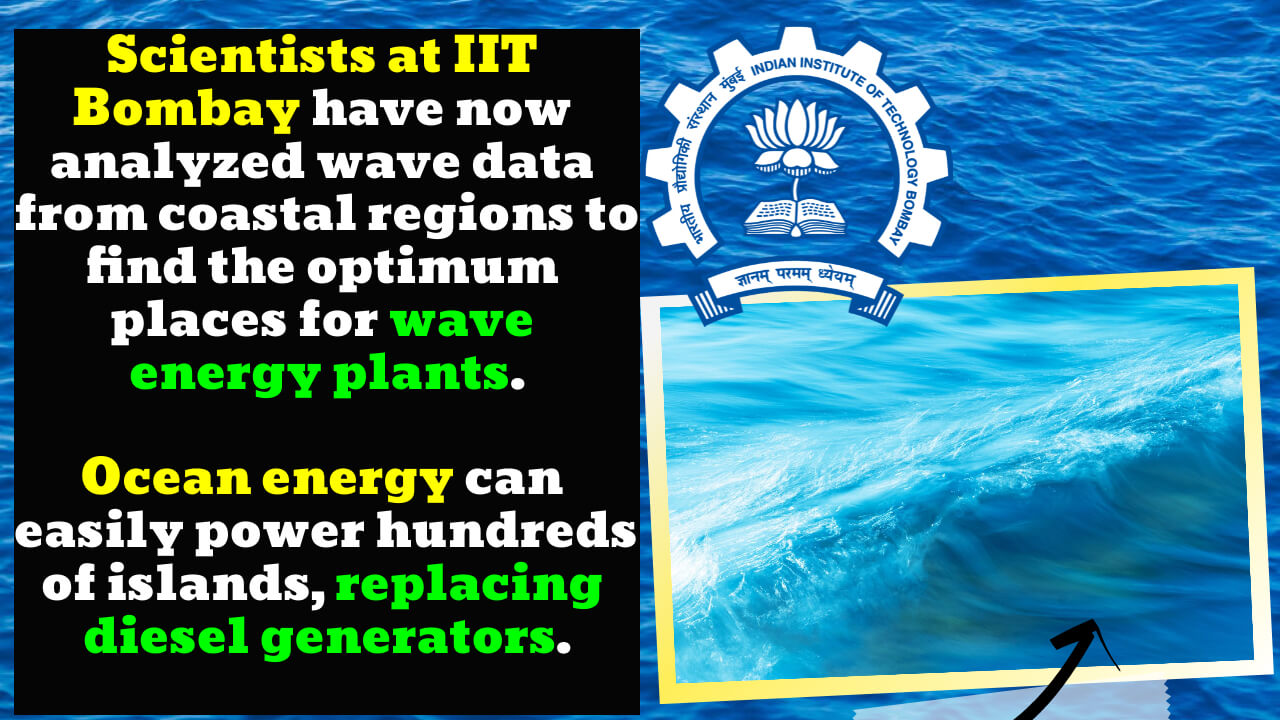Researchers are trying to figure out how to get the 40,000 MW of renewable power that the Indian seas have stored up for us. A group of scientists from IIT-Madras and CRISIL has looked at wave data from coastal areas to find the best places for wave energy plants. When they looked at India’s coast, they looked at wave data from 39 years. The southern tip of India, which has a lot of wave power and few changes, is the best place for wave energy plants. In a joint development agreement, IIT-Madras has agreed to work with Virya Paramita Energy’s start-up. Under this agreement, Abdus Samad will work on new technology.
Key Highlight:
- Scientists are trying to figure out how to get hold of the 40,000 MW of renewable power that the Indian seas have. A lot of energy is moving through the sea.
- Researchers at the Indian Institute of Technology, Bombay, have looked at wave data from coastal areas to figure out the best places for wave energy plants to be set up.
- The paper says that wave energy plants should be built on the southern tip of India, where the waves have a lot of power and don’t change very much.
- During the non-monsoon months, solar energy is plentiful. The study suggests combining solar and wind with wave energy plants to get the best results.
- The ocean, instead of diesel generators, could power many islands.
How can we get renewable power from the Indian seas? That’s what researchers are trying to do.
The seas are full of energy. During high and low tides, water moves up and down. Underwater currents move through the ocean, and the crashing of waves is also an energy source. All of this is steady, base-load energy, which is different from other renewable energy sources that come and go.
But humans haven’t tapped into this energy source, except for a few small projects in the UK, Brazil, and Denmark, among other places. Problem: The price is a problem, but that isn’t too hard to deal with. We’ve seen this time and time again, with things like solar equipment and electric cars. Besides, there wasn’t much of a need to look for ocean energy until recently. There has been a change in the dynamics because of the climate crisis.
A report by IIT-Madras and CRISIL says there is 40,000 MW of energy in Indian waters that could be used for energy. Even though very little has been done in India to get energy from the ocean, this is true. Researchers at the Indian Institute of Technology, Bombay, have looked at wave data from coastal areas to find the best places for wave power plants.
Prof. Balaji Ramakrishnan led the team, which looked at two important factors: the “significant wave height” (SWH) and how long it takes a wave to pass a certain point. These things together give a sense of “wave power.”
It was used in a computer-based study to look at 39 years of waves on India’s coast from the European Center for Medium-Range Weather Forecast. “We looked at data to figure out how SWH and wave power changed over the seasons in different places,” Ramakrishnan told Quantum. These studies, he says, are important to find the right technology for harvesting energy.
The waves were made to look like they were real.
Still, it’s in a very early stage. Ramakrishnan says the team ran many computer simulations and then checked some of the results with real data from the places where the simulations took place. Computer simulations of ocean dynamics and wave data analysis give a rough idea of where wave power plants might be built. “However, we need to get more information.”
Ramakrishnan said that the first step is to figure out which areas have a lot of potential for wave energy plants. Then, he said, the best places for the plants should be found in those areas.
There is a journal called Regional Studies in Marine Science, where Ramakrishnan’s work has been written about. The paper says that the southern tip of India, which has a lot of wave power and few changes, is the best place for wave energy plants.
It is possible to get a lot of solar energy during the non-monsoon months. The study suggests combining solar and maybe wind with wave energy plants.
Ramakrishnan told Quantum that they could look for new ways to cut costs. In this case, some wave energy plants could be built on the breakwaters built for fishing harbors. He says that ocean energy could power hundreds of islands instead of diesel generators.
There is a good chance that the information you learn from this IIT-Bombay study will help you focus on the right things in the future. For example, it could show you where power plants could be built.
The devices are made for India.
It is the first step to setting up large-scale wave power plants. The article says that we need to figure out how much energy is available to use wave energy, look into possible and best technologies, make devices that work in Indian conditions, collect data from backing up our estimates, and think about how wave energy might affect the environment.





[…] Researchers at IIT Bombay harness the power of oceans for clean… […]